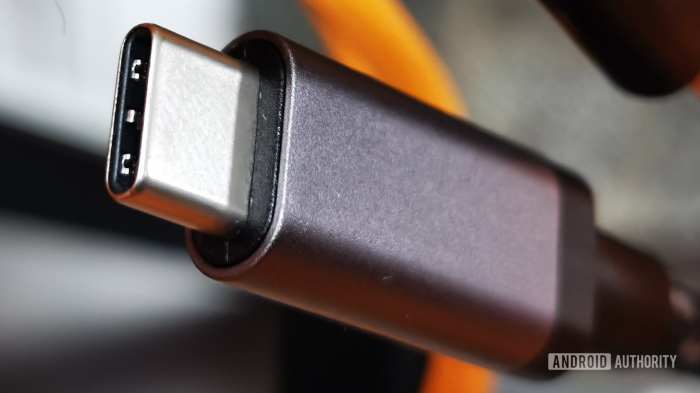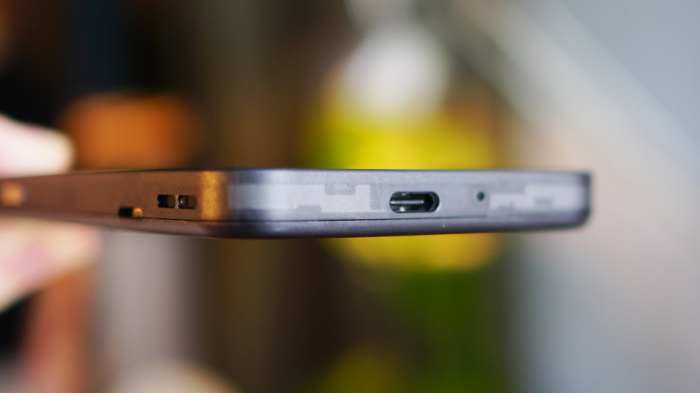The Move to USB-C
Google’s decision to mandate USB-C for all Android phones is a significant step towards a more unified and user-friendly mobile ecosystem. This move signifies a commitment to creating a universal standard for charging, eliminating the fragmentation that has plagued the smartphone market for years.
The adoption of USB-C across Android phones promises numerous benefits for consumers. A standardized charging port eliminates the need for multiple chargers for different devices, leading to increased convenience and reduced clutter. This move also contributes to a more sustainable future by reducing e-waste generated from discarded proprietary chargers.
Benefits of a Standardized Charging Port
The benefits of a universal charging port extend beyond individual convenience. A standardized port encourages a more sustainable ecosystem by reducing e-waste and fostering greater interoperability. This means that consumers can use the same charger for multiple devices, reducing the need to purchase new chargers and ultimately decreasing the amount of electronic waste ending up in landfills.
USB-C Adoption in Android Phones vs. Other Mobile Operating Systems
The move towards USB-C in Android phones is a significant step forward in creating a more unified mobile ecosystem. While Android has been steadily adopting USB-C, the landscape of charging ports across different mobile operating systems remains fragmented. Apple, for example, continues to use its proprietary Lightning connector for iPhones, despite growing calls for standardization. This creates a barrier for consumers who may own devices with different operating systems, requiring them to carry multiple chargers.
Impact on Manufacturers and Consumers
The shift to USB-C across Android devices presents both opportunities and challenges for manufacturers and consumers alike. This change necessitates a significant adaptation for manufacturers, impacting production lines and costs, while consumers can anticipate benefits like universal charging and faster speeds, though potential challenges like needing new chargers and potentially higher device prices also emerge.
Impact on Manufacturers
Manufacturers will face a significant shift in their production processes and potentially increased costs. The move to USB-C requires retooling production lines to accommodate the new standard, which may involve investing in new machinery and training staff. The cost of adopting USB-C might also increase the price of smartphones for consumers. Additionally, manufacturers may need to renegotiate agreements with accessory manufacturers, leading to potential delays in the availability of compatible chargers and other accessories.
The Future of Charging Technology: Google Confirms Usb Type C Will Arrive In Future Android Handsets
While USB-C is poised to become the standard for wired charging, the future of mobile phone charging holds even more exciting possibilities. Beyond the familiar cables, we’re entering an era of wireless charging that promises faster speeds, greater convenience, and innovative charging solutions.
Advancements in Wireless Charging, Google confirms usb type c will arrive in future android handsets
Wireless charging has come a long way since its early days. Today, it’s a convenient and increasingly popular option for many smartphone users. But the future holds even more potential for this technology.
- Increased Power and Efficiency: Wireless charging is becoming faster and more efficient, with higher wattage outputs enabling quicker charging times. Companies like Qualcomm and Energous are pushing the boundaries with advancements like “Qi2” and “WattUp,” which promise even faster wireless charging speeds.
- Longer Range: The range of wireless charging is also expanding. Companies are developing technologies that allow devices to charge wirelessly from a greater distance, making it easier to charge phones without needing to place them directly on a charging pad.
- Reverse Wireless Charging: Reverse wireless charging allows smartphones to act as charging pads, enabling users to charge other devices like earbuds or smartwatches wirelessly.
- Multi-Device Charging: Future wireless charging technologies will be able to charge multiple devices simultaneously, making it easier to power up an entire ecosystem of connected devices.
Faster Charging Speeds
Faster charging speeds are a key priority for both manufacturers and consumers.
- Higher Wattage Outputs: Current fast charging technologies, such as Qualcomm’s Quick Charge and Samsung’s Adaptive Fast Charging, utilize high wattage outputs to deliver rapid charging speeds. These technologies are constantly evolving, with higher wattage outputs being developed to further reduce charging times.
- Advanced Battery Technologies: Battery technology is also playing a crucial role in faster charging speeds. New battery chemistries and designs are being developed to allow for faster charging without compromising battery life or safety.
- Smart Charging Algorithms: Smart charging algorithms are being developed to optimize charging speeds based on factors such as battery temperature, usage patterns, and power availability.
Other Potential Innovations
The future of charging technology is brimming with innovative possibilities.
- Solar Charging: Solar charging utilizes solar panels to convert sunlight into energy that can be used to charge mobile devices. This technology has the potential to provide a sustainable and convenient way to power up devices, especially in areas with abundant sunlight.
- Kinetic Charging: Kinetic charging harnesses energy from movement, such as walking or running, to generate power for mobile devices. This technology could be integrated into wearable devices or even shoes, allowing users to charge their phones on the go.
- Biometric Charging: Biometric charging utilizes the body’s natural energy, such as body heat or movement, to generate power for mobile devices. This technology is still in its early stages of development but holds significant potential for the future.
Impact on the Mobile Phone Industry and Consumer Behavior
The advancements in charging technology will have a significant impact on the mobile phone industry and consumer behavior.
- Increased Convenience: Faster and more convenient charging options will reduce the need for frequent charging, making mobile devices more accessible and usable.
- Reduced Battery Anxiety: Faster charging speeds and increased battery capacity will reduce battery anxiety, allowing users to spend less time worrying about their phone’s battery life.
- New Device Designs: The shift towards wireless charging will likely lead to new device designs that prioritize wireless charging capabilities.
- Increased Adoption of Wireless Charging: As wireless charging technology becomes more advanced and widely available, it is expected to become the preferred charging method for many consumers.
Environmental Considerations
The move to a standardized charging port like USB-C has significant environmental implications, offering a path towards a more sustainable future for the mobile phone industry. By reducing e-waste and energy consumption, USB-C can contribute to a greener world.
Environmental Benefits of Standardized Charging
A standardized charging port like USB-C reduces e-waste by eliminating the need for multiple chargers for different devices. This eliminates the need for consumers to accumulate a collection of incompatible chargers, reducing the number of chargers that end up in landfills. This directly contributes to a reduction in the amount of electronic waste generated, which is a major environmental concern.
The environmental benefits of USB-C are undeniable, as it directly addresses the issue of e-waste and energy consumption, promoting a more sustainable mobile phone industry.
Comparing the Environmental Impact of Different Charging Technologies
- USB-C: USB-C is generally considered to be more environmentally friendly than proprietary ports due to its standardization. It allows for the use of a single charger for multiple devices, reducing the need for multiple chargers and minimizing e-waste.
- Wireless Charging: While wireless charging offers convenience, it can be less energy-efficient than wired charging, especially when using older technologies. However, advancements in wireless charging technology, like Qi 2, are improving energy efficiency and reducing the environmental impact.
- Proprietary Ports: Proprietary ports are often criticized for contributing to e-waste. They require consumers to purchase specific chargers for each device, leading to a greater number of chargers being discarded.
Contribution to a Sustainable Mobile Phone Industry
The shift to USB-C promotes a more sustainable mobile phone industry by:
- Reducing E-waste: As discussed earlier, a single charger for multiple devices significantly reduces e-waste. This aligns with efforts to minimize electronic waste and promote responsible recycling practices.
- Energy Efficiency: USB-C can contribute to energy efficiency by enabling the use of more efficient charging technologies. This reduces the overall energy consumption associated with charging mobile devices.
- Promoting Circular Economy: By encouraging the use of standardized chargers, USB-C promotes a circular economy model. Consumers can reuse chargers for different devices, reducing the need for new production and contributing to a more sustainable cycle.
Market Reactions and Analysis
Google’s announcement regarding the mandatory adoption of USB-C charging for all Android devices has sparked diverse reactions from major phone manufacturers. While some have embraced the move, others have expressed concerns about the potential implications for their businesses and the broader smartphone market.
Manufacturers’ Reactions
The move towards a universal charging standard has generated a mix of responses from manufacturers.
- Apple: Apple, known for its proprietary Lightning connector, has been a vocal opponent of the USB-C mandate. The company argues that it restricts innovation and hampers consumer choice. However, Apple has faced pressure from regulators and consumers alike, ultimately leading to the introduction of USB-C on its iPhone 15 series.
- Samsung: Samsung, a leading Android manufacturer, has already adopted USB-C on its flagship devices. The company has welcomed the move, stating that it aligns with its commitment to sustainability and consumer convenience.
- Google: As the driving force behind the USB-C mandate, Google has consistently advocated for a universal charging standard. The company believes that it will benefit consumers by eliminating the need for multiple chargers and promoting sustainability.
- Other Manufacturers: Many other Android manufacturers have also expressed support for the USB-C mandate, citing its benefits for consumers and the environment. Some manufacturers, however, have voiced concerns about the potential impact on their product development and differentiation.
Impact on the Competitive Landscape
The shift to USB-C is expected to have a significant impact on the competitive landscape of the mobile phone market.
- Increased Competition: By eliminating the proprietary charging advantage of some manufacturers, the move to USB-C could lead to increased competition. This could benefit consumers with more choices and potentially lower prices.
- Focus on Innovation: The mandate could shift the focus of innovation towards other areas, such as software, camera technology, and battery life. This could lead to a more diverse and exciting smartphone market.
- Potential for Differentiation: Despite the standardized charging port, manufacturers can still differentiate themselves through other features and design elements. This could involve faster charging technologies, innovative software features, or unique design aesthetics.
Google confirms usb type c will arrive in future android handsets – The shift to USB-C is not just about convenience; it’s a step towards a more sustainable future. By reducing the need for multiple chargers, we can significantly cut down on electronic waste and promote a greener mobile industry. While challenges remain, the future of charging looks brighter, with advancements in wireless charging and faster charging speeds promising even greater convenience and efficiency in the years to come.
Google’s decision to embrace USB-C on future Android phones is a welcome change for users, paving the way for a more standardized charging experience. This move echoes the trend seen in other devices, like the Lacie Porsche Design Mobile Drive , which also features USB-C for compatibility with the latest Macbooks. With more and more devices adopting USB-C, it’s clear that this port is becoming the universal standard for charging and data transfer, simplifying life for consumers and manufacturers alike.
 Standi Techno News
Standi Techno News

